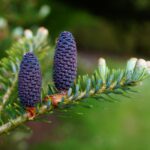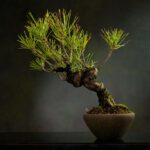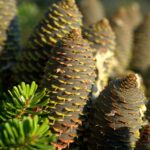Black Hills Spruce Bonsai: Care, Styling, and Growing Guide
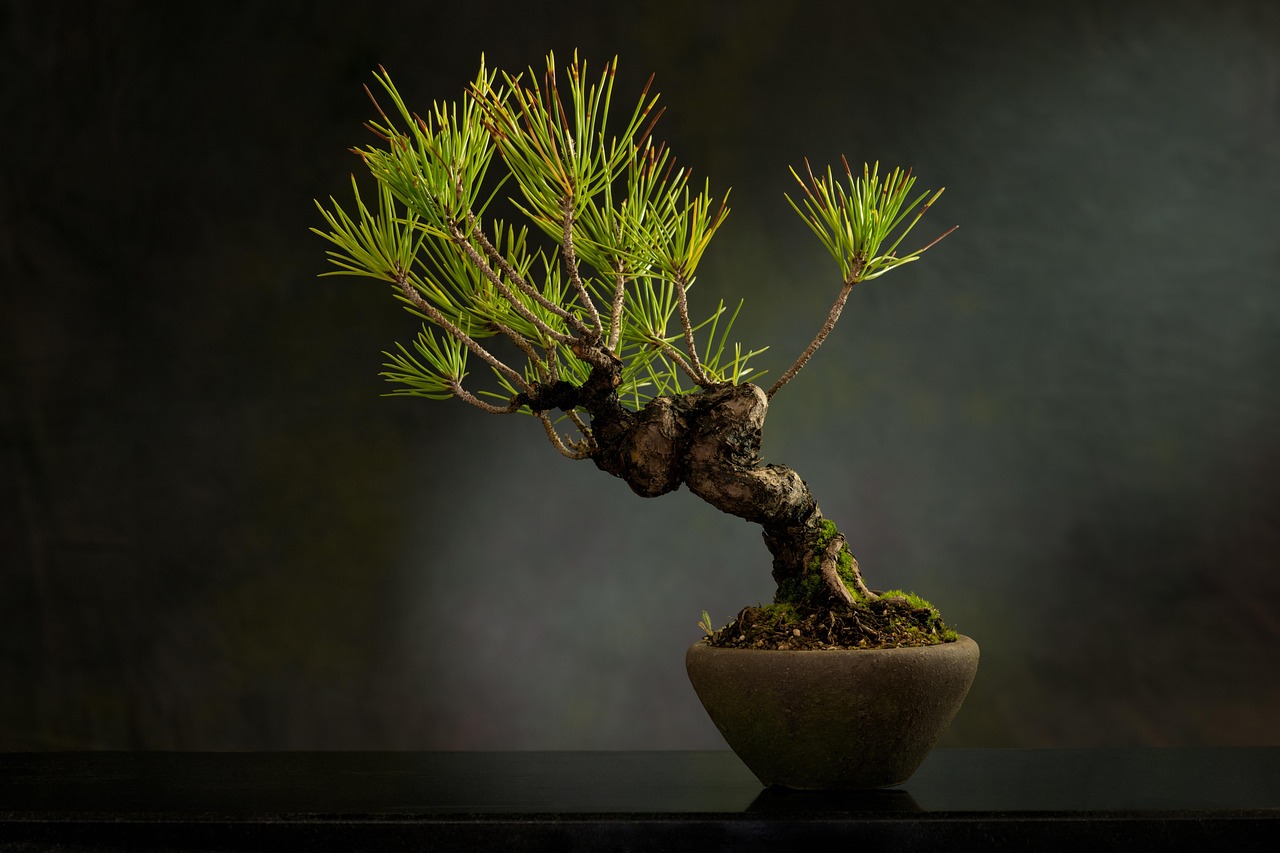
When I first got into bonsai, I was drawn to the dramatic shapes of maples and the delicate flowers of cherry trees. But lately, I’ve found myself really appreciating the quiet strength of conifers, and the Black Hills spruce, in particular, has captured my attention. It’s a cultivar of the white spruce, originally found thriving in the higher elevations of the Black Hills in South Dakota. This tree has a natural inclination towards a dense, narrow form, with needles that range from a deep green to a more bluish hue. It’s a hardy specimen, adapted to cooler summers and colder winters, which makes it a good candidate for bonsai in many climates.
Introduction to the Black Hills Spruce Bonsai
I find its resilience and unique growth habit make it a fascinating subject for bonsai cultivation. While many people might think of pines or junipers first when considering conifers for bonsai, the Black Hills spruce offers a different kind of beauty. It’s not the easiest tree to work with, mind you; they don’t tend to sprout new buds easily from old wood, and branches you wire can sometimes spring back to their original position. But with patience and the right techniques, you can create a really striking miniature tree.
Here’s a quick look at what makes this spruce stand out:
- Origin: Native to the Black Hills region of South Dakota.
- Needles: Aromatic, typically deep green to blue-green.
- Form: Naturally dense and narrow, making it suitable for bonsai.
- Hardiness: Thrives in USDA zones 3-6, preferring cooler climates.
While it can adapt to various soil types, it does best in well-draining soil that leans towards the acidic side. It also prefers conditions where air can circulate freely, helping to keep its needles dry, which is a key factor for its health.
I’m looking forward to exploring how to best care for, style, and grow these trees into beautiful bonsai specimens. It’s a journey that requires attention to detail, but the reward of shaping such a sturdy and attractive tree is well worth the effort.
Understanding the Natural Habitat and Characteristics of Black Hills Spruce
When I first started looking into Black Hills spruce for bonsai, I was curious about where they actually come from. It turns out this particular type of spruce, scientifically known as Picea glauca ‘densata’, is a cultivar of the white spruce. Its natural home is in the higher elevations of the Black Hills region in South Dakota. This environment is characterized by cooler summers, cold winters, and generally drier conditions, with a preference for full sun.
These trees are known for their attractive, dense growth habit and their needles, which are a deep green, sometimes with a bluish tint, and they smell nice when you crush them. In their natural setting, they can grow quite tall, often reaching 50 to 70 feet, with a narrower spread than many other spruces.
Here’s a quick rundown of what makes them unique:
- Native Range: Black Hills, South Dakota, at elevations above 6,000 feet.
- Climate Preference: Prefers cool summers, cold winters, and dry air. It does not do well in humid or overly wet conditions.
- Sunlight Needs: Thrives in full sun, though it can tolerate some partial shade.
- Soil Preference: Favors well-draining, slightly acidic soil.
It’s important to remember that their native habitat is quite specific. Trying to replicate these conditions, especially the dry air and cool temperatures, is key to success when growing them as bonsai, particularly outside of their hardiness zones.
As a bonsai, these characteristics translate into specific care needs. They don’t like being waterlogged, and good air circulation around the branches is a must. Their slower growth in less-than-ideal conditions means patience is a virtue when styling them.
Age, Size, and Quality for Black Hills Spruce Bonsai
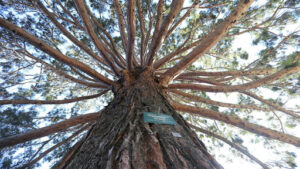
When I first started looking into Black Hills spruce for bonsai, I realized picking the right tree is a big deal. It’s not just about grabbing any spruce you see. You want a specimen that has good potential from the start, which means looking at a few key things: age, size, and overall quality.
Age is a bit tricky with bonsai. You can start with a very young nursery plant, maybe just a few years old, or you can find a more mature tree that already has some character. Younger trees are easier to shape from the ground up, but they take longer to develop that aged look. Older trees might already have a nice trunk or interesting branch structure, but they can be more expensive and sometimes harder to train because they’re less forgiving of mistakes.
Size matters too, but not just the height. I look at the trunk diameter and the overall ramification, which is how many branches and twigs the tree has. A thicker trunk generally looks more impressive and mature. For bonsai, I usually aim for a trunk diameter that feels proportional to the desired final height of the tree. It’s also important to consider the root base, or nebari. A good nebari, where the surface roots spread out like a fan, adds a lot to the tree’s stability and aesthetic appeal.
When I assess quality, I’m looking for a healthy tree first and foremost. Are the needles a good color? Is there any sign of pests or disease? I also check the taper of the trunk – does it go from thick at the base to thin at the top? That’s a sign of a healthy, natural growth pattern. A tree with a strong, healthy trunk and a good branch structure already in place will save you a lot of work down the line.
Here’s a quick rundown of what I look for:
- Trunk: Look for a good taper, from thick at the base to thinner as it goes up. Avoid trees with straight, pencil-like trunks.
- Branches: Are there branches at different heights and all around the trunk? This makes styling much easier.
- Roots (Nebari): A well-developed surface root system is a big plus for stability and visual appeal.
- Health: Vibrant green needles, no obvious signs of pests or disease.
Choosing a Black Hills spruce for bonsai is a bit like picking a good foundation for a house. If you start with a solid, healthy specimen that has good basic structure, your styling and care efforts will pay off much more in the long run. It’s worth taking the time to find that right tree.
Soil, Potting, and Transplanting Needs of a Black Hills Spruce Bonsai
Getting the soil right for a Black Hills spruce bonsai is pretty important, I’ve found. These trees, originating from higher elevations, really appreciate a mix that drains well. I usually go for a blend that includes things like akadama, lava rock, and pumice. A good starting ratio for me is often 1:1:1, but I’ll adjust based on the specific tree and its age. The particle size matters too; for most trees, I aim for about 3/16 of an inch, maybe a bit smaller for really tiny specimens.
When it comes to potting and repotting, timing is key. I’ve learned that early spring, just as the buds are starting to swell, is the best window. It’s a delicate balance; you want to repot when the tree is ready to grow, but before it puts too much energy into new foliage. When I repot, I’m careful not to remove all the old soil. Leaving a bit of the original soil around the root ball helps the tree adjust more smoothly. I also try not to be too aggressive with root pruning. Cutting back too many roots at once can really stress the tree, and I’ve seen it set them back for a whole growing season.
Here’s a quick rundown of what I look for in my soil mix:
- Drainage: This is number one. Spruce roots don’t like sitting in soggy conditions.
- Aeration: The roots need to breathe, so a porous mix is a must.
- Water Retention: While drainage is vital, the soil still needs to hold enough moisture between waterings.
I’ve also noticed that Black Hills spruce tends to prefer soil that’s a bit on the acidic side. While they can tolerate a range, leaning towards acidic conditions seems to make them happier. If I’m unsure, I’ll do a simple pH test on the soil before repotting and amend it if necessary. Adding some compost when initially planting or repotting can also give the tree a good start.
Transplanting is a bit like giving your tree a fresh start. It’s a chance to refresh the soil, check the roots, and ensure the tree has room to grow. Doing it at the right time and with the right care makes all the difference in how well it recovers and thrives.
Watering, Light, and Climate Requirements for Healthy Growth
Getting the watering, light, and climate right for your Black Hills spruce bonsai is pretty important for keeping it healthy and looking good. I’ve found that these trees, coming from higher elevations, have specific needs that aren’t too complicated once you get the hang of them.
When it comes to watering, consistency is key, but don’t drown the roots. I usually check the soil surface daily during the growing season, which is roughly from spring through fall. If the top layer feels dry, it’s time to water thoroughly. I make sure water drains freely from the pot. In winter, I ease up, checking maybe every few days, but I never let the root ball dry out completely. It’s a bit of a balancing act, really.
Here’s a quick rundown on watering frequency:
- Spring/Summer: Check daily, water when the topsoil is dry.
- Fall: Check daily, water as needed, potentially less often than summer.
- Winter: Check every 3-5 days, water sparingly, and avoid complete drying.
For light, these trees really do best with full sun. I try to give mine at least six to eight hours of direct sunlight each day. If you live somewhere with really intense summer heat, like I do sometimes, it might be a good idea to provide a bit of afternoon shade. This can prevent the foliage from getting scorched. They do tolerate partial shade, but growth will be slower, and the tree might not be as full.
Black Hills spruce prefer cooler climates with dry air and cold winters. They adapt well to lower elevations, but ensuring good airflow around the tree is important to help keep moisture from lingering on the branches, which can cause issues.
As for climate, these trees are tough and can handle cold winters, which is great for overwintering. They come from the Black Hills of South Dakota, so they’re used to those kinds of conditions. They don’t like high humidity, so good air circulation is a must. If you’re in a very hot and humid area, you might need to be extra careful about placement and watering to mimic their natural environment. They generally do well in USDA hardiness zones 3-6, so knowing your zone is helpful when deciding on the best spot for your bonsai. For those in warmer climates, consider how to provide that cooler, drier air, perhaps by placing them in a location with good breezes. It’s similar to how some trees do well in the higher elevations of the Black Hills.
| Season | Light Requirement | Watering Frequency (approx.) | Notes |
| Spring | Full Sun | Daily (check soil) | Begin regular watering and fertilizing. |
| Summer | Full Sun (afternoon shade if very hot) | Daily (check soil) | Monitor closely for drying out. |
| Fall | Full Sun | Every 2-3 days (check soil) | Reduce watering as temperatures cool. |
| Winter | Partial Shade | Every 3-5 days (check soil) | Protect roots from hard freezes; avoid drying |
Pruning, Wiring, and Styling Techniques for Black Hills Spruce Bonsai
Working with Black Hills Spruce for bonsai involves a few key techniques to shape its natural growth into an artistic form. I’ve found that patience is really important here, as these trees don’t always respond as quickly as some other species.
When it comes to pruning, my approach is to manage the new growth. In the spring, I let the new shoots extend a bit, usually to about an inch or two. Once they reach that length, I’ll pinch or cut them back. The goal is to keep the growth balanced across the tree. This usually means only one main pruning session per year, as they tend to have just one flush of growth. It’s important to remember that Black Hills Spruce doesn’t readily produce new buds from old wood, so always leave some needles and buds on any branch you intend to keep.
Wiring is best done in the fall or late winter, before the new buds start to swell. I avoid doing heavy bending during the coldest parts of winter, as the branches can be more brittle. For lighter styling or detail work, I can do it pretty much any time, but those cooler months are ideal for more significant adjustments. The branches on these spruces are quite flexible, which is helpful. However, I’ve noticed that wired branches can sometimes revert to their original positions over time, so repeated wiring might be necessary to maintain a desired shape.
Here’s a general guideline for timing and approach:
- Pruning New Growth: Allow shoots to extend 1-2 inches, then pinch or cut back to balance energy. This is typically done once in the spring.
- Wiring: Best performed in fall or late winter. Avoid heavy bending in extreme cold.
- Branch Selection: Due to whorled growth, select only one branch per whorl, especially on lower sections, to avoid crowding.
When styling, I always keep in mind that these trees naturally have branches that droop slightly at the base before angling upwards. Trying to force a completely horizontal branch might look unnatural. Instead, I often work with that natural inclination, perhaps wiring a branch to have a gentle upward sweep at the tip.
I’ve found that removing lower, drooping branches can help raise the canopy over time, which is a common styling goal. Dead or broken branches can be removed at any point throughout the year. It’s a process of refinement, really, guiding the tree’s natural tendencies rather than imposing something entirely foreign.
Common Pests, Diseases, and Troubleshooting Issues
When I first started working with Black Hills Spruce bonsai, I quickly learned that keeping them healthy means being aware of potential problems. It’s not usually a huge battle, but a little vigilance goes a long way.
One of the most common nuisances I’ve encountered is spider mites. These tiny critters can really do a number on the needles, especially when the weather gets hot and dry. You might not see them at first, but you’ll notice the oldest needles on a branch starting to yellow. If you look closely with a magnifying glass, you’ll spot the mites themselves. Keeping the soil consistently moist, but not waterlogged, and avoiding placing the tree in overly hot, reflective spots can help prevent major infestations. Sometimes, a strong spray of water can knock them off, but for persistent issues, I’ve had to resort to specific miticides.
Another issue I’ve seen is gall-forming insects, like the Cooley spruce gall adelgid. These create little pineapple-shaped galls on the tips of branches. While a few galls aren’t usually a death sentence for a healthy tree, a heavy infestation can weaken it. I usually try to prune off affected branches if I catch them early. For things like bagworms, which make little cases out of needles and debris, I just pick them off by hand when I see them. If there are a lot, a treatment with Bacillus thuringiensis can be effective.
I’ve found that spruces, in general, don’t like being in unsuitable environments. Things like high humidity or constant overcast conditions, which you might find in urban or coastal areas, can stress them out and make them more prone to problems. It’s best to mimic their natural, more open and airy mountain habitat as much as possible.
Diseases aren’t as frequent a concern for me, but I do keep an eye out for rusts. A single instance of rust, which shows up as yellowing and dropping needles, usually isn’t a big deal. However, if it seems to be spreading, I’ll treat it with a fungicide. It’s always a good idea to have a general-purpose bonsai pest control product on hand, just in case.
Here’s a quick rundown of what I look for:
- Spider Mites: Yellowing needles at the base of branches, especially in hot, dry weather. Look for tiny mites with a magnifying glass.
- Gall Adelgids: Pineapple-shaped galls on branch tips. Prune affected branches or use appropriate insecticides if severe.
- Bagworms: Small cases made of needles and debris. Handpick or use Bacillus thuringiensis.
- Rusts: Yellowing and dropping needles. Treat with fungicide if widespread.
If I’m ever unsure about a problem, or if a pest or disease seems particularly stubborn, I don’t hesitate to consult with more experienced growers or a local nursery. It’s better to get it right the first time than to let a small issue become a major one.
Seasonal Care Schedule & Long-Term Maintenance for Black Hills Spruce Bonsai
Keeping your Black Hills Spruce bonsai healthy throughout the year involves a bit of planning, but it’s really not too complicated once you get the hang of it. I’ve found that paying attention to the seasons makes a big difference.
The most important thing is to adjust watering based on the weather and the tree’s needs.
Here’s a general breakdown of what I do:
- Spring: This is a busy time. I start by checking the soil moisture more frequently, maybe twice a day when it starts warming up. If I see new buds swelling, it’s a good time to think about repotting if it’s due, usually every two to four years. I’ll also do some light pruning of new shoots, letting them extend a bit before pinching them back. Fertilizing begins now, either with a slow-release organic option or a diluted liquid feed.
- Summer: Watering is key here. I keep a close eye on the soil, watering thoroughly as soon as the surface feels dry. In very hot climates, I might move the tree to a spot with a little afternoon shade to prevent stress. I continue fertilizing regularly throughout the growing season.
- Fall: As temperatures cool, I reduce watering frequency, but I still make sure the soil doesn’t dry out completely. This is a great time for wiring and styling, as the branches are still flexible but the tree is preparing for dormancy. I might also do some minor pruning to shape the tree.
- Winter: This is when the tree rests. I move my spruce to a sheltered spot, ideally with some protection from harsh frost, especially if it’s in a pot. Watering is minimal, but I never let the root ball dry out. I’ll check it maybe once every few days. If I’m in a very cold area, I might even bury the pot in the ground for extra root protection.
Long-term, I focus on consistent, appropriate care. I try to avoid heavy pruning on old wood because these trees don’t tend to backbud well from bare sections. If I need to wire branches, I’m mindful not to do it during the hottest part of summer. It’s also good to remember that these trees, like the Black Hills Spruce seeds you might start with, are adapted to cooler climates, so protecting them from extreme heat and cold is paramount.
Over the years, I’ve learned that patience is a virtue with bonsai. Observing your tree, understanding its subtle cues, and responding accordingly is more effective than following a rigid schedule. Each tree is a bit different, and adapting your care to its specific environment and condition will lead to the best results. It’s a rewarding process, watching it develop over time.
Keeping your Black Hills Spruce bonsai healthy year-round involves a good plan. Our guide covers everything from watering and feeding during different seasons to long-term care to ensure your tree thrives. Want to learn more about how to keep your bonsai looking its best? Visit our website for detailed tips and advice!
Frequently Asked Questions
What makes the Black Hills spruce special for bonsai?
I find the Black Hills spruce to be a wonderful choice for bonsai because of its naturally dense growth and aromatic needles. It originates from the Black Hills region of South Dakota, thriving in cooler climates and full sun, which are good starting points for bonsai care.
How often should I water my Black Hills spruce bonsai?
I make sure to water my spruce bonsai thoroughly as soon as the soil feels dry to the touch. It’s important not to let the soil stay soggy all the time, though. During winter, I water less frequently, but I never let the roots dry out completely.
What kind of soil is best for a Black Hills spruce bonsai?
For my Black Hills spruce bonsai, I use a soil mix that drains well. While it can handle different soil types like clay, loam, and sand, it really prefers soil that is a bit acidic. I sometimes test the soil’s pH to make sure it’s just right.
When is the best time to prune or wire my spruce bonsai?
I typically prune dead or broken branches whenever I see them. For shaping, I find that late winter or early spring is a good time for any optional pruning. When wiring, I prefer to do it in late summer or early spring, avoiding mid-summer when the tree can be more sensitive.
What are the common problems I might encounter with my Black Hills spruce bonsai?
I’ve noticed that Black Hills spruce doesn’t like very humid or wet conditions, so I avoid placing it in urban or coastal areas where those issues might arise. Pests like mites and aphids can sometimes be a problem, but usually, a healthy tree can handle them. I also keep an eye out for rust diseases, which might cause needles to yellow and drop.
How much sunlight does a Black Hills spruce bonsai need?
I always place my Black Hills spruce bonsai in a spot that gets full sun, especially during the growing season. If the summer heat is very intense where I live, I might move it to a location with a bit of shade during the hottest part of the day to protect it.

